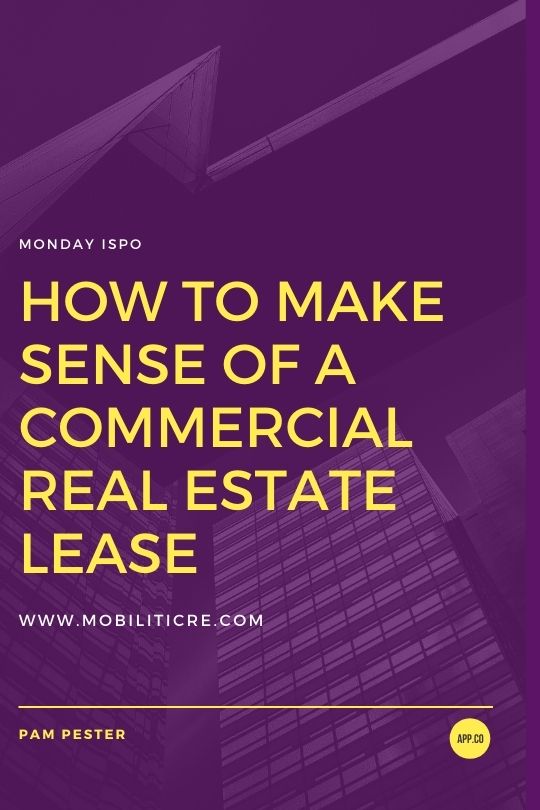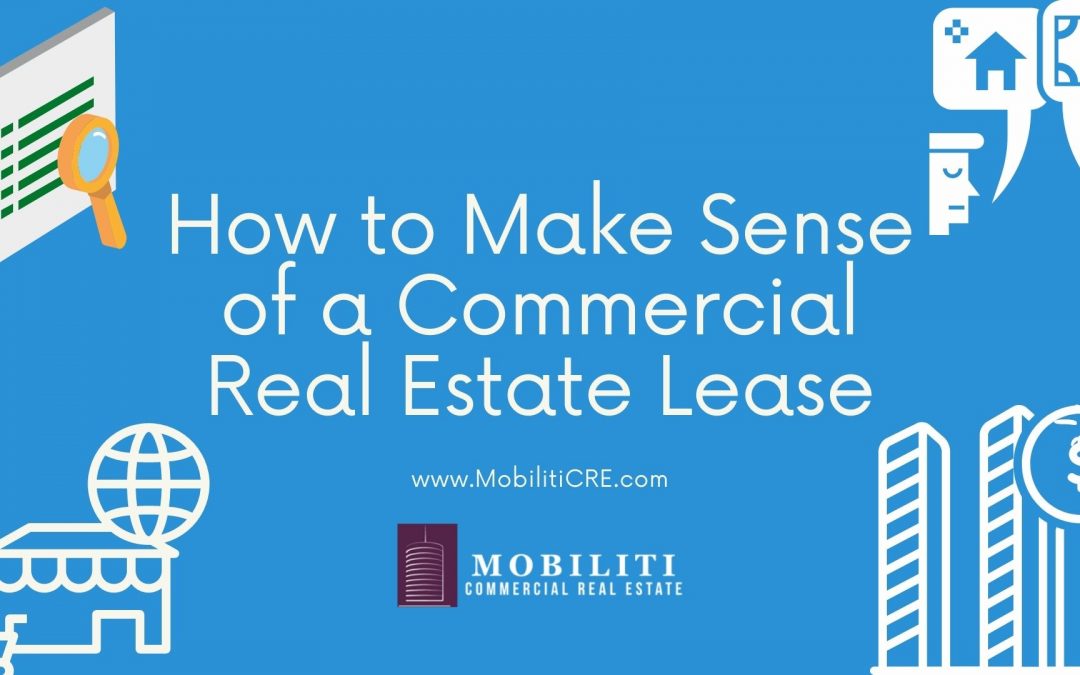Once your commercial real estate broker has submitted a letter of intent outlining the business points for the lease of your new location and those business points have been fully negotiated, the landlord will submit a draft lease for review. In order to get a commercial real estate lease with the best terms for your business, it is important that you hire an attorney with experience in negotiating commercial leases. An experienced attorney can help you avoid headaches years from lease execution by including lease terms that allow maximum legal protection for the tenant. The attorney’s success in obtaining the best terms will depend in part on the financial strength of the tenant, the size of the space leased and the term of the lease. A financially strong tenant leasing 20,000 feet of space for ten years will be able to negotiate much better terms than a small startup.
Assuming you have hired an attorney, you should also review the lease and have a basic understanding of the following key legal points. Understanding these points will allow you to better communicate with your attorney.
Avoid Personal Liability.
If at all possible, avoid signing a personal guaranty. If your business fails for any reason, you will be personally liable and would wind up in personal bankruptcy if you cannot pay off the balance of the lease payments.
Security Deposit.
Virtually all landlords will require some form of a security deposit for your lease. The security deposit can be either in the form of cash or a letter of credit. The exception to this rule is for corporate tenants with exceptional credit who may not have to put up a security deposit. Privately held companies usually have to put up at least two months’ rent as security. The exact amount will depend in large part on the amount of money being spent by the landlord for improvements and the tenant’s credit. In some instances, the tenant may be able to negotiate a burn-down provision where the security deposit declines over the term of the lease.
Non-Disturbance Agreement.
This provision states that if the landlord should default in the payment of its mortgage and lose the building, the lender must recognize you as a tenant. This provision is very important to tenants signing long term leases and expending significant amounts of their own funds for tenant improvements. However, this provision is typically only available to tenants leasing large blocks of space.
Use.
This provision describes the acceptable activities that can occur within the space. It is important to describe all of the activities you will be performing in the space. If there is any doubt that your use could violate local zoning or land use regulations, it’s important to require the landlord to represent and warrant that your use is permissible and to provide that you can terminate the lease without penalty if your use violates any land use or zoning codes.
Rent Commencement.
The rent commencement date should provide for the possibility that there may be a delay in finishing tenant improvements and should provide for a delay in payment of rent if that happens.
Common Area Maintenance and Operating Expenses.
Common Area Maintenance (CAM) and Operating Expenses are sometimes used interchangeably but they are not the same thing. CAM refers to expenses associated with the maintenance of common areas of the property. CAM is a subcategory of operating expenses.
Besides CAM, operating expenses typically include taxes, insurance and may include other non-separately metered items such as janitorial. It is important to understand these charges in order to ensure that the tenant does not end up paying for items that should be paid for by the landlord or only paid by tenants receiving a benefit from the expense. This portion of the lease is typically heavily negotiated and may include the following tenant-friendly provisions:
- Exclusion of capital expenditures or if not excludable amortization over a reasonable term,
- Capping increases in common area charges,
- Capping increases in taxes in the event of sale of the building,
- Excluding payments for major repairs in a short-term lease,
- Tenant’s right to audit,
- Cap on management and administrative fee,
- Exclusion of landlord’s costs of doing business,
- Exclusion of costs related to the landlord’s wrongdoing,
- Exclusion of costs that don’t benefit tenants equally or are caused by other tenants, and
- Gross up expenses for buildings with low vacancy.
Tenant improvements.
Prior to move in most spaces will need to be built out or retrofitted for the tenant’s specific use. The landlord typically provides a tenant improvement allowance to cover some or all of the costs of the build out or retrofit. Negotiating the tenant improvement allowance is one of the most important provisions in your lease. In negotiating the allowance, the tenant has two main goals: (a) get as large of an allowance as possible and (b) maintain as much control over the buildout as possible. There are two types of tenant improvement allowances (a) turnkey buildout and (b) stated dollar amount.
Turnkey Buildout.
With a turnkey buildout the landlord pays all of the costs associated with a buildout based on approved design and agreed upon rental rate. Turnkey buildouts work well for smaller leased premises or for simple buildouts requiring carpet, paint, and moving a few walls. While a turnkey buildout seems like a risk-free solution for the tenant, this option is not always the best choice for the tenant.
A major problem with a turnkey buildout is that the landlord is going to add a significant amount to the estimate to cover contingent costs in order to ensure that the landlord doesn’t end up paying more than the amount estimated. This contingency can amount to 25-30% of the entire bid! The more efficiently the landlord manages the buildout the more it can save. This can encourage the landlord to cut corners. Also, with a turnkey buildout, the tenant relinquishes control of the process. This can be alleviated somewhat by negotiating an extensive work letter detailing the materials and work to be done.
Stated Dollar Amount.
A stated dollar amount allowance provides the tenant with a specific predetermined amount which usually includes architectural, engineering and buildout costs. With a stated dollar contract, the tenant maintains control over both the quality and timing of the process. In order to maintain as much control as possible, I encourage tenants to get the landlord to waive its management fee for the project and I encourage the tenant to select their own project manager to oversee the process. Finally, if possible, negotiate that any costs over and above the stated amount be amortized into the rental rate over the term of the lease.
Responsibility for HVAC Charges.
For multi-tenant office leases, the Landlord is generally responsible for maintaining and/or replacing the HVAC. It is important that the lease spell out standard hours of operation. For a tenant operating outside those standard hours, additional air conditioning is typically charged by the hour and is often marked up above the landlord’s actual cost. Tenants taking a significant amount of space may be able to negotiate these charges down. Tenants in single-tenant properties, industrial and flex properties are often responsible for repair and sometimes even replacement of the HVAC units after occupancy. In these instances, it is important to have the units inspected prior to occupancy and any repairs or replacement should be paid by the landlord.
Lease Flexibility.
It is important that your lease allow you the greatest flexibility possible in terms of your ability to expand or contract over time. The longer the term of your lease, the more flexible it will need to be. The following provisions can all contribute to increased flexibility.
Lease Term.
Although it seems counter-intuitive, a longer-term lease may actually be a less risky proposition than a short-term lease. For example, if you sign a seven-year lease and you need to sublease at the end of year three, you still have a four-year term remaining and that is still attractive to a new tenant. However, if you sign a five-year lease and need to sublease at the end of year three, you will only have two years left.
Many tenants will not want to go through the hassle of moving for a two-year term and you may not be able to sublease the space for the remainder of the term. An additional issue to consider is the prevailing economic climate when you sign the lease. When economic conditions are strong, the cost of real estate is at the high end of the cycle. Signing a long-term lease in a strong climate could lock you into a high rent lease for years to come.
In this type of climate, it’s better to sign a shorter lease. Conversely, during a recession lease costs are at the low end of the cycle. This is typically a good time to sign a long-term lease. Another factor to consider is the company’s projected growth. A startup company that expects to grow rapidly may not want to sign a long term lease. All of these factors must be considered when selecting a term.
 Lease Termination and Contraction Options.
Lease Termination and Contraction Options.
A lease termination or contraction option can be an excellent way to achieve lease flexibility. Landlords are not fond of these options and they can be difficult to obtain. Most landlords will not even consider a termination or contraction for a lease term less than seven years. In addition, these options are not free. At a minimum, the landlord will require payment of unamortized costs associated with tenant improvements, brokerage fees, and rent concessions for the amount of space terminated. These options can be expensive, but they offer significant flexibility. For example, if you sell your business and do not want to continue to be responsible for a subtenant’s default, a termination option is very helpful.
Expansion Options.
As your company grows you may discover that you need more space. Rather than negotiating a new lease, you may be able to build a series of expansion options into an existing lease. Ahold option gives you the right to take over another space in the building at some point during the lease. A right of first offer will give you a “first look” at any space that opens up in the building. A right of first refusal requires the landlord to give you the opportunity to rent a particular space in the building before offering it to a third party.
Renewal Option.
A renewal option in a lease is a great asset to the tenant. This clause allows you to extend a lease after the initial term has ended and gives you a much easier way to negotiate when the time comes. The notice period of a renewal defines how far ahead of time it is necessary for you to inform the landlord that you wish to renew. Try to negotiate at least 12 months so that you have time to consider other options. Many renewals provide that they will be renewed at “fair market value”. The term fair market value must be defined. The goal is to have an objective third party means of determining fair market value. Also, it’s important that the fair market value take into account the tenant improvement allowance and concessions the landlord would have to offer a new tenant.
Assignment and Subletting.
Circumstances may arise in which it is necessary for a tenant to vacate their space early. In such instances, an assignment or sublease is a very beneficial provision to have. An assignment differs from a sublease in that an assignment transfers the original tenant’s rights and obligations under the original lease to a new tenant. The original tenant is completely off the hook.
With a sublease, the original tenant remains liable for lease payments in the event the subtenant defaults. Landlords prefer subleases because then they have two tenants liable for rent. The landlord will typically only grant automatic assignment rights to affiliates or successors of the original tenant. With either a sublet or an assignment, the Landlord will want the right to approve the creditworthiness of the subtenant or assignee and the terms of the sublet or assignment. It is very important to negotiate that the landlord’s consent will not be unreasonably withheld.
If possible, avoid any requirement that you offer the space first to the landlord. This is known as a “recapture provision”. If the landlord does have the right to recapture, try and limit the time frame for recapture. Also, try to negotiate the right to offer the space to other tenants in the building. Finally, it’s crucial that you be able to sublease your space for less rent than that being offered by the landlord.
At Mobiliti CRE we focus 100% on representing tenants with relocations, expansions, contractions, and subleases throughout Tampa Bay and the entire West Coast of Florida. We also assist businesses that are looking to purchase office, medical office, industrial, and retail space. Reach out to us for assistance with all of your commercial real estate needs at (813)-300-2227 or email us at pam@mobiliticre.com
More Tenant Related Information
- Tampa Bay Commercial Office Market Snapshot
- How to Maximize Tenant Renewals
- Tips for Renegotiating Rent Due to COVID-19
- Having Your Own Buyer’s Representative Can Save Money
- 11 Tips for a Successful Real Estate Tour
- Cost Saving Strategies to Reduce Rental Expenses
- Determining How Much Office Space You Need

